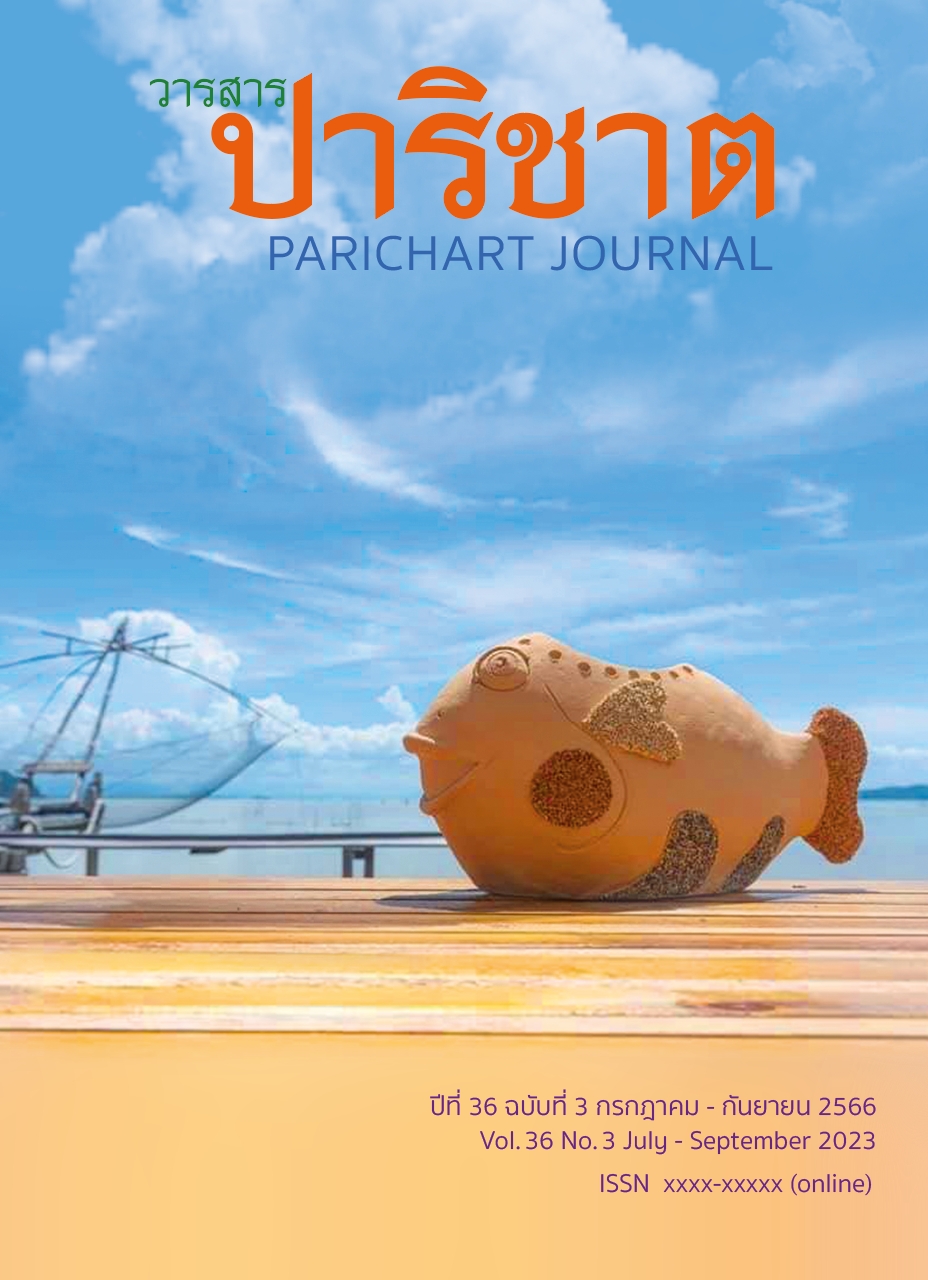Impact of Dynamic Leadership and Competitive Strategies Affecting Operating Results: Case Study of Community Enterprise Leaders in Sakhon Nakhon Province
Main Article Content
Abstract
This research aims to study the effects of 1) dynamic leadership on competitive strategies and 2) competitive strategies on performance. Using the simple random sampling technique, 345 community enterprise entrepreneurs in Sakhon Nakhon Province was used as the samples in this study. The results revealed as follows. 1) Regarding the dynamic leadership effect (comprising creativity orientation and relationship improvement) on competitive strategies, the former could forecast the latter at 44.3 percent. 2) The results of the analysis of the competitive strategies (comprising capital leadership and differentiation) that had the effects on the performance, the strategies could forecast at 43.7 percent with the statistical significance. The research results reflect that people with the dynamic leadership has influenced the competitive strategies and the competitive strategies is considered as an important factor for better performance.
Article Details

This work is licensed under a Creative Commons Attribution-NonCommercial-NoDerivatives 4.0 International License.
References
Kumthai, W., & Detthamrong, U. (2018). The impact of perceived brand innovation and creative thinking, competitive focus on creative innovation efficiency of small and medium enterprises in the Northeastern of Thailand. Journal of Modern Management Science. 16(2), 149-160. (In Thai)
Jintana, S., & Puripanik, T. (2019). A problem, limitations and approaches for strengthening of community- based enterprises in Thailand. Journal of Graduate School of Commerce-Burapha Review, 12(3), 179-193. (In Thai)
Community Enterprise Information System. (2021, January 12). Community Enterprise Promotion Division Department of Agricultural Extension. https://smce.doae.go.th/ProductCategory/SmceCategory.php?page_size=10&PAGE. (In Thai)
Yamane, T. (1973). Statistic: An Introductory analysis (3rd ed). Harper and Row.
Tirakanant, S. (2008). Creating an instrument to measure variables in social science research: Guidelines for practice. Chulalongkorn University Printing House. (In Thai)
Teece, D. J., Pisano, G., & Shuen, A. (1997). Dynamic capabilities and strategic management. Strategic Management Journal, 18(7), 509-533.
Wang, C. L., & Ahmed, P. K. (2007). Dynamic capabilities: A review and research agenda. International Journal of Management Reviews, 9(1), 31-51.
Sakhonkaruhatdej, K. Khorchurklang, S., & Changkaew, L. (2016). Dynamic capabilities, competitive advantage and business success of Thai food processing industry. Kasem Bundit Journal, 17(2), 225-238. (In Thai)
Juthaisong, C., & Niruttikul, N. (2021). Factors influencing competitive advantage of auto part manufacturers in the eastern economic corridor. Journal of Graduate School of Commerce-Burapha Review, 16(2), 32-44. (In Thai)
Bass., & Avolio, (1999). Improving organizational effectiveness trough transformational leadership. Sage.
Aaker, D. A., Kumar, V., & Day, G. S. (2001). Marketing research. John Wiley and Sons.
Porter, M. E. (1980). Competitive strategy: Techniques for analyzing industries and competitors. Free Press.
Decharin, P. (2001). Balanced scorecard and key performance indicators (2nd ed.). Chulalongkorn University. (In Thai)
Hair J.F., Black W.C., Babin B.J., Anderson R.E., & Tatham R.L. (2006). Multivariate data analysis (6th ed.). Pearson Prentice Hall.
Vanichbuncha, K., & Vanichbuncha T. (2021). Using SPSS for windows to analyze the data (34th ed.). Samlada. (In Thai)
Sivapitak, S. (2016). The effect of transformation leadership impact on characteristic of entrepreneurship in tourism business corporations. BU academic review, 15(2), 29-41. (In Thai)
Funchien, S., & Kasai, P. (2021). The influence of leadership and EQ of leader affecting to the effectiveness of the small restaurants in Bangkok. Dusit Thani College Journal, 15(2), 238-250. (In Thai)
Suwunniponth, W. (2017). Human capital potential and dynamic capability of entrepreneurs in Thai software industries for enhancing competitiveness capability in the ASEAN economic community. Veridian E-Journal, Silpakorn University, 10(3), 1-20. (In Thai)
Ruksasri, P., Yangkham, P., Chalermchit, A., Wanichkittikul, K., & Masaunjik, N. (2018). Effect of transformational leadership on sustainable value added creation of community enterprise in Maha Sarakham. Research reports (Management and accounting) Rajabhat Maha Sarakham University. (In Thai)
Sirinon, W. (2020). The effect of entrepreneurial orientation and competitive advantage on organizational performance of food industry small and medium enterprises in lower north-eastern. NRRU Community Research Journal, 14(1), 243-252. (In Thai)
Punyaruang, K. (2016). Strategies competitive advantage that affect the success of the operation base on the balance scorecard concept in small and medium enterprises food processing in Supanburi province. MA Thesis (Business), Silpakorn University. (In Thai)
Snow, C. C., & L. G. Hrebiniak (1980). Strategy, distinctive competence, and organizational performance. Administrative Science Quarterly, 25(2), 317-336.
Anoree, S. (2021). Factors affecting competitive advantage and success of entrepreneurs and small and medium enterprises in Ratchaburi Province. MA Thesis (Business), Silpakorn University. (In Thai)
Jeungpattana, S. Kositkanin, T., & Sodsri, N. (2022). A case study of competitive advantage strategy that effects the success of sugarcane plantation entrepreneur: Case study of Kanchanaburi Province. Journal of Multidisciplinary in Humanities and Social Sciences, 5(1), 275-290. (In Thai)


